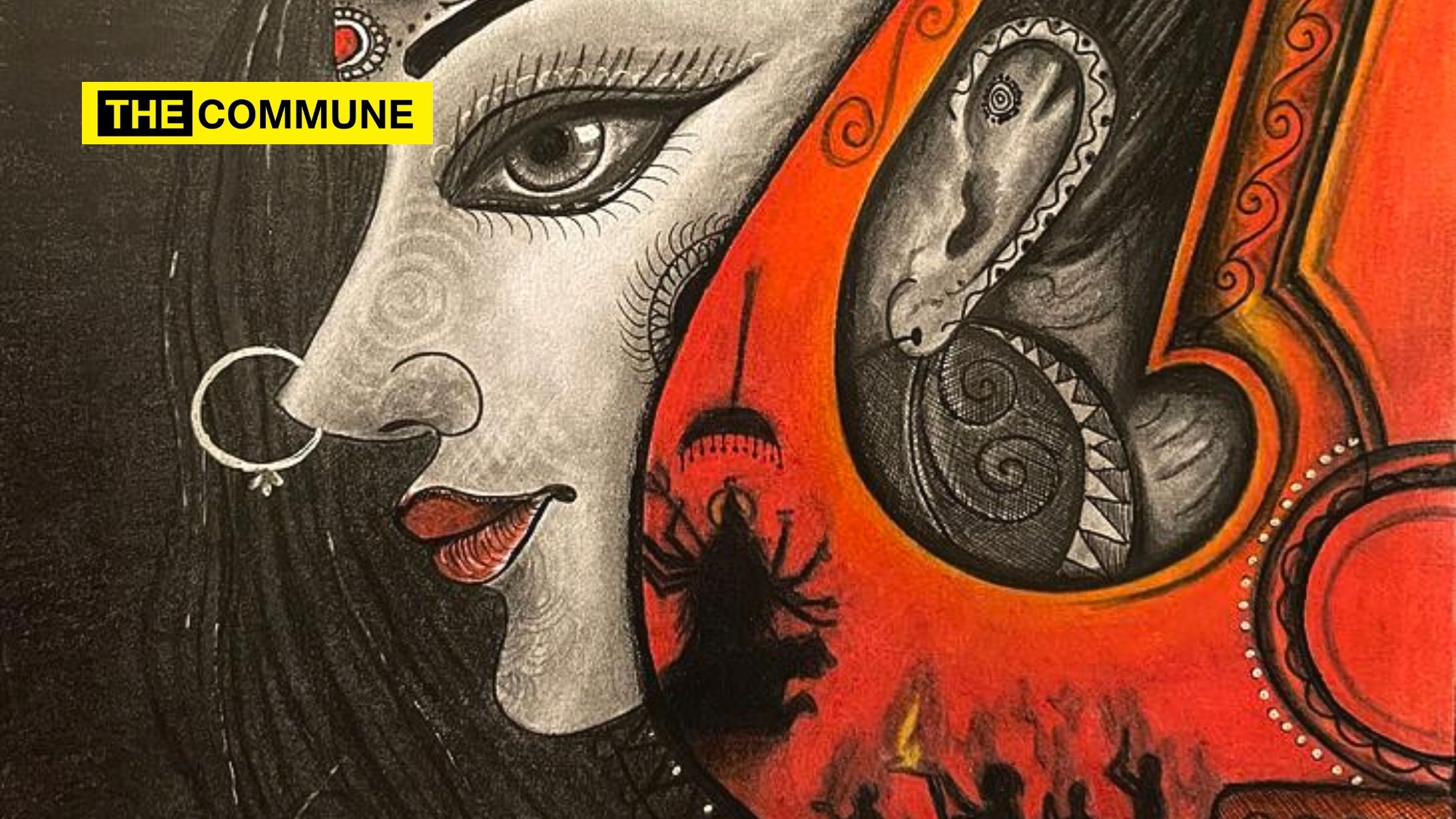
Just before when Goddess Durga, Kali, Lakshmi, Saraswati, and other feminine deities were to be venerated and celebrated across the country, Viduthalai Chiruthaigal Katchi leader and Chidambaram MP Thol.Thirumalavan on September 26, 2020 heaped his disgusting talks about women belonging to Hindu community. He said ” All women are prostitutes as per Hindu Dharma.. Manu Dharma..”.
This has led to a polarization in Tamil Nadu with the left, Periyarist, Islamic and missionary organizations supporting his statements. But at the ground level, Thirumavalavan has brought a bad name upon himself with his consistent tirade on Hinduism.
This brings us to the question – How does Hinduism view women? What is the position of women in Hinduism / Sanathana Dharma? This article will explore the historic nature of women worship and the way women are placed in the Hindu culture.
Women as Goddesses
Shaktism is the oldest form of the spiritual path in Indic Civilization in which Goddess is considered as supreme deity and every disciple is considered as a son to the goddess whose ultimate goal is to reach the mother. Shaktism dated back to the era of Vedas in which Rig Veda has verses praising the goddess.
While it is impossible to date the roots and origins of this everlasting Dharma, the modern-day worship of Goddess can be traced to the Indus/Saraswati civilization.
The philosophical development of women as mother began in Vedic age. In the famous Rig Vedic hymn Devi Sukta, the Goddess unambiguously declares:
“I am the Sovereign Queen; the treasury of all treasures; the chief of all objects of worship; whose all-pervading self-manifests all gods and goddesses; whose birthplace is in the midst of the causal waters; who in breathing forth gives birth to all created worlds, and yet extends beyond them, so vast am I in greatness.”
Further, during Gupta period Shaktism achieved its full glory with kings belonging to Gupta dynasty patronizing and following Shaktism.
In recent history, it was the mother of Shivaji, the greatest Maratha king, who was of influence in him from his young age to create Hindvi Swaraj against Islamic oppression.
Akka Mahadevi was a prominent figure of the Veerashaiva Bhakti movement of the 12th century Karnataka. Her Vachanas in Kannada, a form of poetry, are considered the most notable contribution to Kannada Bhakti literature. The Attukal Bhagavathy temple in Kerala is dedicated to goddess and women where men are not allowed to visit on certain days.
Recent developments related to Shaktism include the emergence of Bharat Mata (Mother India), the increasing visibility of Hindu female saints and gurus. Apart from all of these most of the sages like Sri Ramakrishna, Sri Vivekananda, Sri Aurobindo worshipped this entire world as a divine feminine representation and achieved moksha by praying to the Goddess.
As one western commentator notes:
“Today just as 10,000 years ago, images of the Goddess are everywhere in India. You’ll find them painted on the sides of trucks, pasted to the dashboards of taxis, postered on the walls of shops. You’ll often see a color painting of the Goddess prominently displayed in Hindu homes. Usually, the picture is hung high on the wall so you have to crane your neck backward, looking up toward her feet. In India, Goddess worship is not a ‘cult,’ it’s a religion, an extraordinarily spiritually and psychologically mature tradition. Millions of people turn every day with a heartfelt yearning to the Mother of the Universe.”
The real question we need to ask is if Islam and Christianity will accept goddess or even accept women as a leading figure in spiritual enlightenment. Remember we are living in the 21st century and the left-liberal cabal does not have the courage to speak or fight for the proper dignified role of women in the spiritual process of Abrahamic religions.
Women as Rulers
In the Gupta period instances are not rare of women participating in administrative jobs. Prabhabati, the daughter of Chandra Gupta II performed administrative duties in her kingdom. Instances of women extending their phase of activities beyond the domestic circle are provided by the queen and queen regent in Kashmir, Rajasthan, Orissa, and Andhra.
Institutions were established for co-education. In the work called Amarkosh written in the Gupta era names of female teachers and professors are mentioned. They were the authors of Vedic scripts and ‘mantras‘.
Two hundred years before Alexander’s attack on India, Queen Nayanika was ruler and military commander of the Satavahana Empire of south-central India.
In 300 BC, Princess Kumara Devi married Prince Chandragupta, and they ruled their two kingdoms as co-regents. Queen Kurmadevi of Mevad commanded her armies on the battlefield in the late twelfth century. Apart from these, there are a lot of instances in which our independence movement against British has been carried on by then women rulers of princely states like Rani Laxmi Bhai.
While all sorts of baseless attributions are made to the practice of sati and jauhar, it is the Islamic conquest of India that led to the practice of jauhar and sati. One profound example is killing of Raja Dahir, his wife, and daughters by Mohammed-Bin-Qasim in the 10th century, then they were sent off as sex slaves to Damascus. This type of slavery has resulted in the evolution of jauhar in western India.
Britishers in the thirst for conquering India had taken over all the princely states who did not have a direct male descendant using the draconian Doctrine of Lapse.
Women as Social Reformers
India has produced so many social reformers of which notably a large section of them are women. They have fought for social issues like any other men. In many cases, they have altered the course of our nation and influenced the opinions and even government policies.
Notable people like Savitrbhai Phule fought for women rights for Indians during British rule. She worked along with her husband Jyotirao Phule for the education of women and fought against discrimination among castes. While they critiqued and condemned the Hindu religion in their own right, they did not resort to malign or denigrate by spewing venom unlike Thol. Thirumavalavan and the EVR groups. Similarly, people like Ramabai Ranade and Sister Nivedita (born Margaret Elizabeth Noble) worked for the cause of education, medical and scientific research. Swami Vivekananda through his work emancipated and provided a conduit for the women to enter into the modern age.
As like these social reformers, Islamism and Christianity also have produced a lot of social reformers who also sought to improve the livelihood of people provided it did not antagonize the Shariah law and rules laid out in Quran or the command of the Vatican. The harassment faced by triple talaq activists is testimony to how social reformers are attacked would be treated by Islamists.
So based on the above facts we can summarize the rights of women across religions as below
| Hinduism | Christianity | Islam | |
| Women as Spiritual Masters | Women can be a presiding deity in temples | Women can never become a leading deity in spiritual process | Women are never allowed to become imams in mosque and conduct prayers as per Shariah Law |
| Women as Rulers and Performing administrative duties | Women have all rights to occupy the highest throne during ancient and medieval era itself. | No historical data to suggest women led any medieval era kingdom Introduced law to take over kingdoms in India which does not have male heirs. | Women can never occupy the highest throne of the country as per Shariah law. Except for Razia Sultana, no solid evidence exists of women being rulers. |
| Women as Social Reformers | Women has all freedom to change the course of society | Women have all freedom to change the course of society. | Women have all freedom to change the course of society only if it advocates Shariah law. |
Despite the blatant misogyny and oppression that Islam and Christianity preaches, due to an unholy alliance between the left-liberal and Abrahamic religions, they will never criticize about the place of women in these two religions.
While these elements have had a free pass till now, it is time that they get back in equal measure of what they have been giving.




